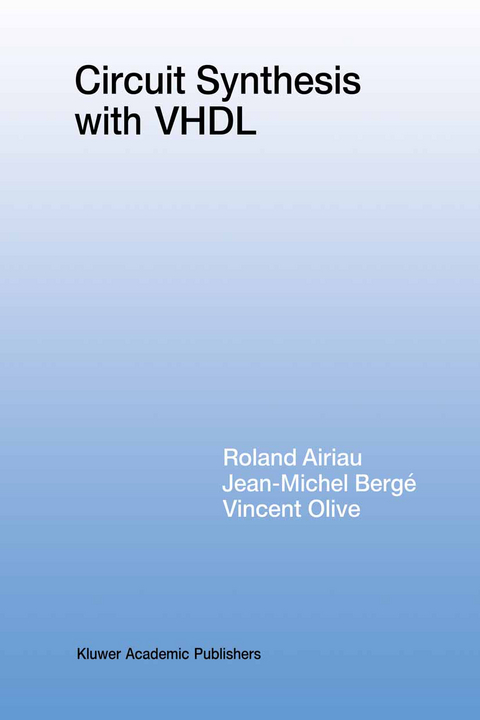
Circuit Synthesis with VHDL
Springer-Verlag New York Inc.
978-1-4613-6191-6 (ISBN)
Circuit Synthesis with VHDL is essential reading for all students, researchers, design engineers and managers working with VHDL in a synthesis environment.
One of the main applications of VHDL is the synthesis of electronic circuits. Circuit Synthesis with VHDL is an introduction to the use of VHDL logic (RTL) synthesis tools in circuit design. The modeling styles proposed are independent of specific market tools and focus on constructs widely recognized as synthesizable by synthesis tools.
A statement of the prerequisites for synthesis is followed by a short introduction to the VHDL concepts used in synthesis. Circuit Synthesis with VHDL presents two possible approaches to synthesis: the first starts with VHDL features and derives hardware counterparts; the second starts from a given hardware component and derives several description styles. The book also describes how to introduce the synthesis design cycle into existing design methodologies and the standard synthesis environment.
Circuit Synthesis with VHDL concludes with a case study providing a realistic example of the design flow from behavioral description down to the synthesized level.
Circuit Synthesis with VHDL is essential reading for all students, researchers, design engineers and managers working with VHDL in a synthesis environment.
1. ABOUT SYNTHESIS.- 1.1. Why VHDL?.- 1.2. VHDL for Which Purpose’?.- 1.3. Is VHDL a Good Language for Synthesise.- 1.4. A Book, an Outline.- 1.5. Synthesis Domain.- 1.6. Interests of Synthesis.- 1.7. Architectural Synthesis Versus Logic Synthesis.- 1.8. Consistency Between Simulation and Synthesis.- 2. VHDL CONCEPTS.- 2.1. Philosophy of the Language.- 2.2. Hardware Hierarchy.- 2.3. Software Hierarchy.- 2.4. Objects of the Language.- 2.5. Information Representation.- 2.6. Concurrency.- 2.7. Sequential Domain.- 2.8. Attached Characteristics.- 2.9. Predefined Environment.- 3. MAPPING VHDL TO HARDWARE.- 3.1. Synthesis Modeling Style.- 3.2. VHDL Types.- 3.3. VHDL Objects.- 3.4. Sequential Statements.- 3.5. Concurrent Statements.- 3.6. Using Generics.- 3.7. Conclusion.- 4. MAPPING HARDWARE TO VHDL.- 4.1. Combinational Circuits.- 4.2. Synchronous Circuits.- 5. DESIGN METHODOLOGY.- 5.1. Synthesis Design Cycle.- 5.2. Synthesis Process Control.- 6. SYNTHESIS STANDARD ENVIRONMENT.- 6.1. Principle.- 6.2. Package STD_LOGIC_1164.- 6.3. Synthesis Working Group Results.- 7. CASE STUDY.- 7.1. Traffic Light Controller: Once Again?.- 7.2. Specification of the Problem.- 7.3. Entity Declaration.- 7.4. Describing the Behavioral Architecture.- 7.5. Describing the Synthesizable Architecture.- 7.6. Designer’s Concerns.- 8. APPENDIX.- 8.1. Grammar Summary.- 8.2. Memo.- 8.3 Index.
| Reihe/Serie | The Springer International Series in Engineering and Computer Science ; 261 |
|---|---|
| Zusatzinfo | XVIII, 221 p. |
| Verlagsort | New York, NY |
| Sprache | englisch |
| Maße | 160 x 240 mm |
| Themenwelt | Informatik ► Weitere Themen ► CAD-Programme |
| Technik ► Elektrotechnik / Energietechnik | |
| ISBN-10 | 1-4613-6191-5 / 1461361915 |
| ISBN-13 | 978-1-4613-6191-6 / 9781461361916 |
| Zustand | Neuware |
| Informationen gemäß Produktsicherheitsverordnung (GPSR) | |
| Haben Sie eine Frage zum Produkt? |
aus dem Bereich


